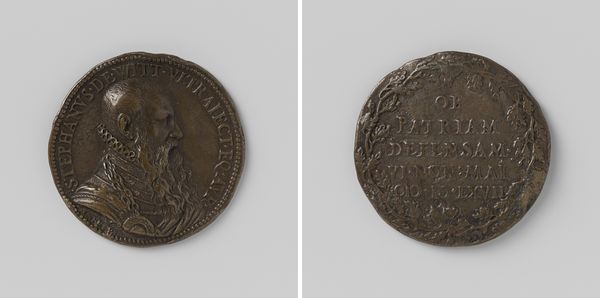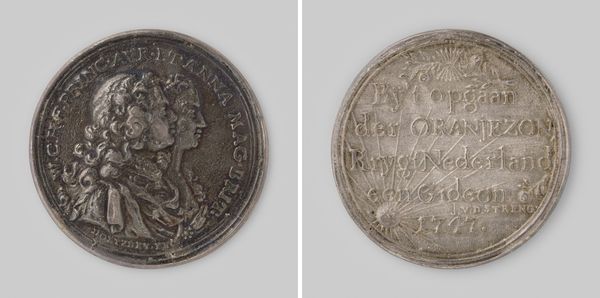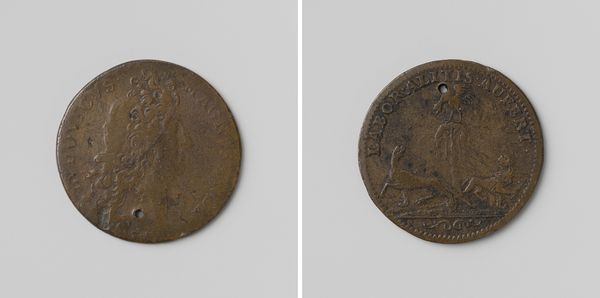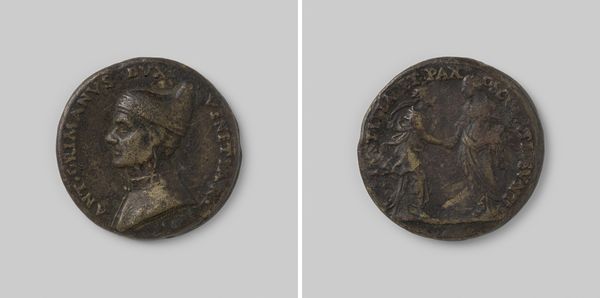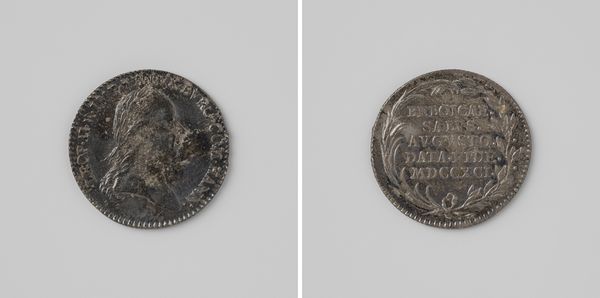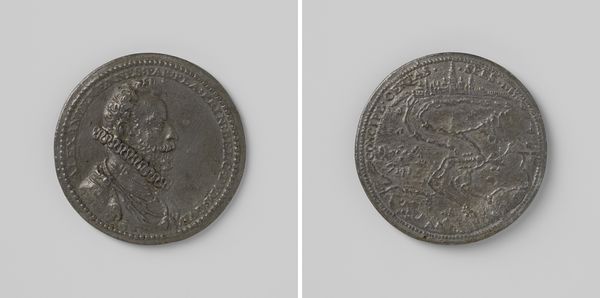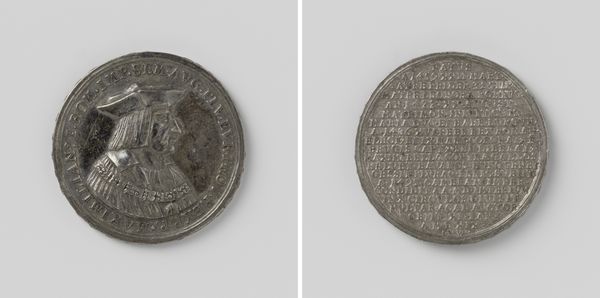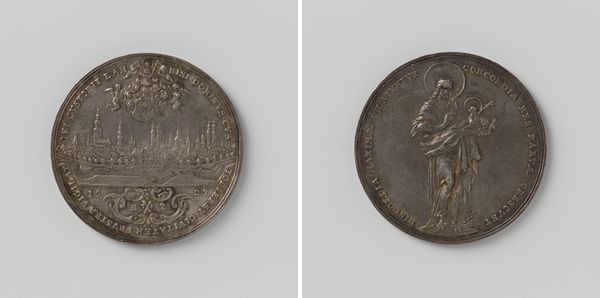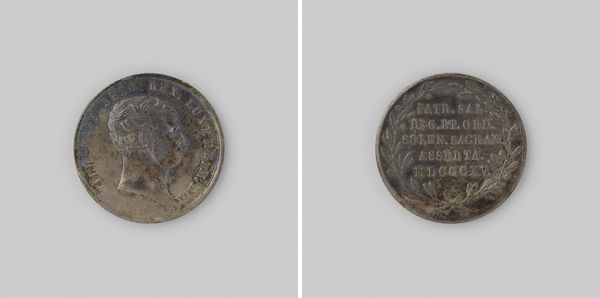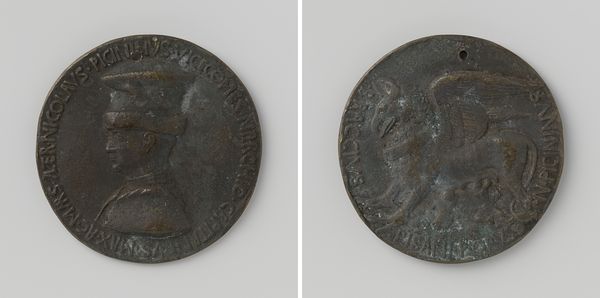
metal, bronze, sculpture
#
portrait
#
baroque
#
metal
#
sculpture
#
bronze
#
sculpture
#
history-painting
Dimensions: width 2.3 cm, height 4.0 cm, thickness 0.8 cm, weight 9.71 gr
Copyright: Rijks Museum: Open Domain
Editor: Here we have a bronze sculpture from between 1658 and 1731 by Jean Dassier. It's titled "Kings and Queens - Oliver Cromwell 1599-1658." It seems to be a coin or medallion, with a portrait on one side and a scene of some kind on the other. It's quite dark and difficult to make out all the details. What's your interpretation of this piece? Curator: This medal offers an intriguing window into the political landscape of the late 17th and early 18th centuries. Dassier, a known medallist, produced these as a series. These medals were a form of political communication and commemoration. Editor: So, they served almost like propaganda? Curator: Precisely. This medal wouldn't have existed in isolation. Think about who was commissioning these images and what message they wanted to convey about figures like Cromwell, long after their death. Medals like this served to shape public memory and legitimize particular narratives about historical figures. Who do you think would want to legitimize the figure of Oliver Cromwell during this period? Editor: Maybe people who favoured a republic or a more limited monarchy? Curator: Exactly. The imagery and text chosen for the medal would carefully crafted to promote particular political viewpoints, given its historic impact to the established monarchies of Europe at this point in history. These objects, though small, reveal a lot about the socio-political forces at play during their creation. I learned something new looking at it from that angle. What about you? Editor: Definitely. I didn't initially think about how the medal itself could be a political statement. It makes me wonder how the images of leaders today might be interpreted centuries from now.
Comments
No comments
Be the first to comment and join the conversation on the ultimate creative platform.

